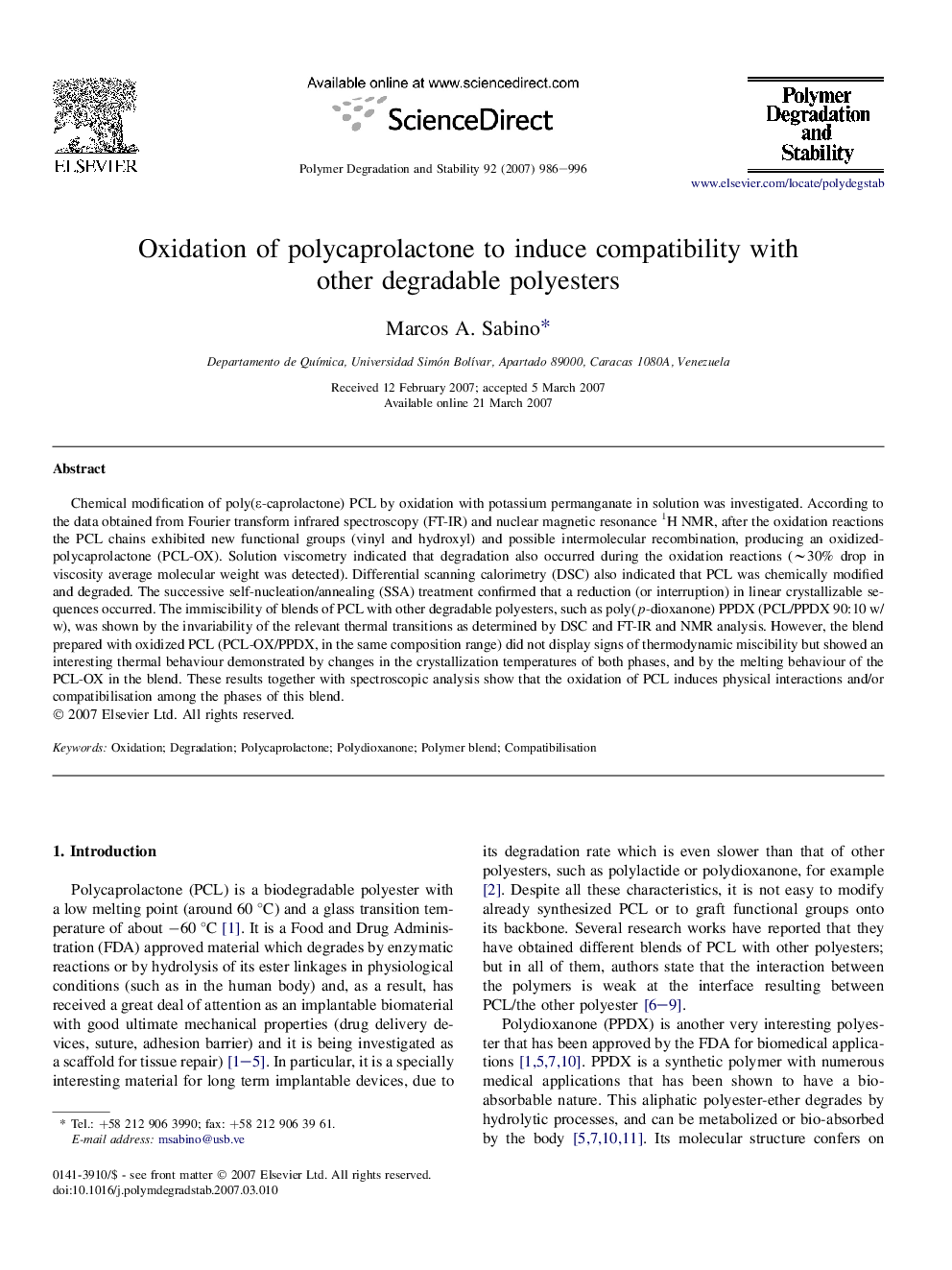| Article ID | Journal | Published Year | Pages | File Type |
|---|---|---|---|---|
| 5205089 | Polymer Degradation and Stability | 2007 | 11 Pages |
Abstract
Chemical modification of poly(É-caprolactone) PCL by oxidation with potassium permanganate in solution was investigated. According to the data obtained from Fourier transform infrared spectroscopy (FT-IR) and nuclear magnetic resonance 1H NMR, after the oxidation reactions the PCL chains exhibited new functional groups (vinyl and hydroxyl) and possible intermolecular recombination, producing an oxidized-polycaprolactone (PCL-OX). Solution viscometry indicated that degradation also occurred during the oxidation reactions (â¼30% drop in viscosity average molecular weight was detected). Differential scanning calorimetry (DSC) also indicated that PCL was chemically modified and degraded. The successive self-nucleation/annealing (SSA) treatment confirmed that a reduction (or interruption) in linear crystallizable sequences occurred. The immiscibility of blends of PCL with other degradable polyesters, such as poly(p-dioxanone) PPDX (PCL/PPDX 90:10Â w/w), was shown by the invariability of the relevant thermal transitions as determined by DSC and FT-IR and NMR analysis. However, the blend prepared with oxidized PCL (PCL-OX/PPDX, in the same composition range) did not display signs of thermodynamic miscibility but showed an interesting thermal behaviour demonstrated by changes in the crystallization temperatures of both phases, and by the melting behaviour of the PCL-OX in the blend. These results together with spectroscopic analysis show that the oxidation of PCL induces physical interactions and/or compatibilisation among the phases of this blend.
Related Topics
Physical Sciences and Engineering
Chemistry
Organic Chemistry
Authors
Marcos A. Sabino,
